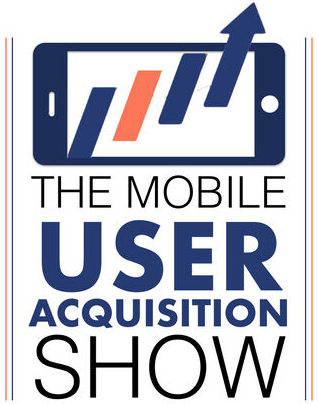
Our guest today is Bastian Bergmann, Co-founder and COO of Solsten. In this episode, he shares how psychology can revolutionize game marketing and creative advertising. Bastian discusses the power of understanding player motivations to craft ads that deeply resonate, driving better engagement and results. He explores real-world examples, like how a simple change in ad copy transformed performance for a Solitaire game, and highlights the role of AI in creating personalized experiences for players. I’m excited to share this deep dive into the intersection of psychology, AI, and marketing, and how these insights can reshape the way we approach creative strategy in the gaming industry.



About Bastian: LinkedIn | Solsten | Solsten Creative Optimization Examples
ABOUT ROCKETSHIP HQ: Website | LinkedIn | Twitter | YouTube
FULL TRANSCRIPT BELOW
Shamanth Rao
I’m very excited to welcome Bastian Bergman to the Mobile User Acquisition Show. Bastian, welcome to the show.
Bastian Bergmann
Thanks for having me, Shamanth.
Shamanth Rao
It’s great to connect with you because you come very highly recommended and you know, by somebody that spoke a great deal about the work you’re doing. So I’m very excited to talk to you. Also because, you know, we’re going to talk about an aspect of gaming. That I think it’s somewhat underappreciated.
You know, and I’m sure folks will find out more as we keep talking. So for a lot of people, when they’re talking about understanding audiences, generally, some of the reference is to demographics and behaviors. Why do you think psychology adds a very different dimension to this?
Bastian Bergmann
A really good example that I tend to use that hopefully resonates with a lot of people listening to this or, or thinking about this, but if I were to ask you Shamanth, not to put you on the spot, but just to make this tangible, you know, if you think of your best friend, for [00:01:00] example, or your life partner, right.
And You’re supposed to get them a birthday gift. And it’s my challenge to also get them a birthday gift. Who’s gonna get them a gift that they’re gonna love, appreciate more, that’s gonna resonate with them a lot more? It’s probably you because you’ve known them a lot longer and you know them a lot more, more deeply, more intimately, and so on.
And I think that that’s the, you know, the example or the raison d’etre, so to speak, why Psychology is relevant, specifically in marketing. There’s a lot of market forces that, you know, we can talk about that have amplified the need for this. But if we’re thinking about players, users, consumers in general, because this is not just gaming, this is marketing in general, you know, where this thinking applies.
But as long as we’re thinking about People, where our game is for, I don’t know, 30 to 40-year-old women in the United States of America, just to give an example, and that’s how we’re thinking about that. That’s like saying they all like the same food. They drink the same wine. They like the same color and they all wear the same dress, which is not true, but that’s how we’re thinking about it from a marketing, from a marketing perspective at that point.
So. For us as marketers, if we want to stand out, we want to make sure that the content that we’re putting out and the game or the service of the product that we’re promoting stands out with the audience that we want to reach, you have to go beyond this understanding of, well, we’re making this for 30 to 40-year-old women, because what does that mean?
What I mean when I say, what does that mean? It makes it extremely challenging to translate. Let’s say that demographic data or that fairly shallow understanding of, well, what do we have to put into our ads? What do we have to put into our content to resonate with that particular group of players or users or consumers to then bring them into our game or to bring them into our environment?
So what psychology allows us to do in this context is. Take specific aspects of the audience that we’re trying to speak to, to understand, well, what are the buttons that we can push? What are the triggers that we have to speak to that are going to resonate with that person and what it ultimately leads to, to just be blunt and frank about it we make better ads and better meaning that speak to the person that we Want to speak to and that we need to speak to have a successful game.
Shamanth Rao
And speaking of ads, oftentimes there’s a perspective that ads Need to place algorithms, not so many cubits, and I think there’s some amount of truth to that, but I’m curious how you would recommend that teams take something as complex as psychological data and use those to form [00:04:00] ad creatives that work.
Are there examples that come to mind?
Bastian Bergmann
One, you just have me smiling, sometimes ads need to be made to please the algorithms and not so much the users. We’ve run into that problem and some of our customers have articulated that. I think at the end of the day, what’s interesting about how That part of the business world works.
Bastian Bergmann: Ultimately incentives are aligned because if the ads are better, meaning better for the person, more people click on it, and more people end up playing your game. That means more ad revenue, more ad dollars, more, more money that goes around for everyone, including the ad network. So it’s. Pleasing the algorithm, I don’t think should ever be it’s it’s a means to an end, but it should never be the end goal because it can’t be because you’re not optimizing for what ultimately matters. After all, what matters is to bring more people into the right environment.
So it’s about. How do you get the right ad and the best ad for those specific people? And, you know, there’s, there are loads of examples that, that we can talk about and, you know, how we’ve seen teams do this in the past and take, let’s say, specific psychological traits and, you know, put them into ads and make better ads.
And I’m, I’m happy to share just, you know, two here that are actually. Pretty simple. So it doesn’t you know, it’s not as complex as it might sound to go Oh psychological data and there’s all these different traits and how do we do that? It can be pretty simple. One of my favorite examples is a company called Mobility Wear they’ve been around for a long time.
They actually come from the ad space they started in the ad tooling space, but they make games too and they have for a long time They actually have one of the biggest solitaire games out in the market solitaire Klondike and we have been working with for four years and specifically with their VP of marketing.
And they’ve been marketing their solitaire games pretty much traditionally, how you would market to back to the stereotypes of how we started this conversation, the stereotypical solitaire player, you know, play this game. It’s good for your mental health. It’s good for your brain. It’s good for your memory.
You know, it’s good for your cognition, all this stuff. What they learned through, you know, working with Solsten specifically, you know, the psychological insights into the solitaire audience globally, one of the highest motivations, intrinsic motivations that one of the personas that they were after had was difficult tasks.
So. They like a challenge, which is not true for every part of the market out there. It’s not true for every audience, but for this particular part of the solitaire market, difficult tasks and difficult challenges were a strong force, a strong motivating factor. And I remember this, it was, you know, that day the VP of marketing called me and he goes, I just feel like I cheated.
I’m like, what do you mean, Zach? What, what do you mean you cheated? It took me 15 minutes. To look at in your guys’ dashboard what difficult tasks mean and he goes and I copy pasted the keyword suggestions that you have associated with that term onto an existing ad that we had so all they did was they kept the visual and they changed the language from train your brain to this is the hardest solitaire game on the market.
Are you the one to beat it? And installs per mil IPMs went from, I think it was 0. 97 to 2. 4 instantly. And it’s sustained that at scaled budget behind, you know, on, on the campaign itself, another good one is Tilting Point with their new game. Godzilla that’s going out or that is, I think it’s in soft launch still.
But the attributes that they were, that they saw in their audience were really about leadership. And fearlessness. So fearlessness is going on an adventure, taking risks, risk-reward mechanics, but like, taking on big adventures and risking something. And leadership speaks for itself. It’s these people who value leadership in a group and, you know, strong people or strong personalities that can show a team the way.
And the visual that they, that they originally had for their ad was, was just gameplay footage and an image from the game itself, you know, three characters in the game. They’re on this bridge setting within a ship. And the tagline was just something to the extent of you have to survive or you need to survive.
And then when they learned those insights from us and we started working with them, the whole visual shifted from now you had Kong and this other monster. So King Kong and this other monster in the background are looming figures. And there was kind of like this mountain setting with the team. Cause it’s five, five people on that mountain.
With a leader with a person leading the group in the middle holding up a sword that was lit up. So there was very clearly a dominant figure within that group and the tagline changed from you need to survive to Will you survive? So it was a lot more daring. It’s very simple tweaks but it was a lot more daring and a lot more, you know playing to the adventure and to the risky nature of The adventure that we want to take users on in that particular game and that’s those are two really simple but striking examples And in their case,e cpi has plummeted about like 30 pretty much instantly of how you can use psychological data to Make better ads and better being it resonates with the consumer that you’re trying to bring into your environment.
Shamanth Rao
Very cool. Some of those changes can seem very Subtle, very small. And you’re right that it isn’t just that a word is being changed somewhat randomly, but it is a word that Is appealing to something much deeper. That’s what is much more important. And having that psychological foundation made the difference to the performance, not just the fact that they changed the word because, you know, and I also want to call that out because oftentimes you hear that.
Oh, we just changed a single word and performance improved dramatically. And that can and does happen, but I think having a method to figuring out what word to change, I think it’s so important, and I think that’s what you are referring to, which is so impactful.
Bastian Bergmann
Yeah, absolutely Shamanth.
And if I may add 11 comments there to the important aspect of the example that you just gave is also it empowers the teams to know why they saw the change. So now there’s learning because they understand the foundational reasons of what’s driving. The metrics to move in whichever direction because of, well, what was the change that we made and why did we make it now there’s learning and now they can apply that into future settings and they can get much smarter at doing iterations and versions of those specific ones and leveraging new insights into that.
If you’re tweaking things at random, you’re going to get maybe to, you’re just going to stumble upon a KPI change now and then, but then you can’t replicate it because you don’t know what the underlying. The reason for the change was you just know that, well, we tweaked, we changed that word, and all of a sudden the performance got better.
Shamanth Rao
Speaking of teams and companies, what do you see as some of the common mistakes that they make while they try to use audience insights? And what are some things you recommend doing for them to avoid these?
Bastian Bergmann
There are a few of them. I think the biggest one, if you talk about insights and I think there’s a, there’s also a comment, I think around AI, generative AI that touches upon this, that we should, that we should talk about.
But when you talk about insights specifically, I think One of the biggest mistakes that teams can make is they’re just going to, let’s say a focus group or their discord channel, or they’re looking at the reviews on the app stores and go, well, people are telling us this and hence they want it. And hence, this is what we should do.
People are extremely poor at articulating, not necessarily what they want, but what they need. And it’s the same challenge with Discord or App Store reviews. It is the vocal minority. Nine out of ten times, if not more than that, that’s saying these things. But it’s not a robust and foundational understanding of what’s the actual market that we’re in, and what’s the specific part of the market that we can reach.
So, it’s taking expressed feedback from users, or sentiment, as the end all, be all, and as, you know, the ultimate guide to decision making, and then say, well, players said this, hence they want it. Hence we should do it because it’ll be successful and a lot of times this Applies to game development too on the same side, you know teams start implementing specific features and mechanics in the game that players Supposedly have asked for, and then no KPIs change because it wasn’t what the majority needed in the game.
So I think that one of the first ones is taking those superficial insights and just relying on expressed opinions from players too much. The other component that I would say, is just because of the rise of Gen AI. And all those different tools because they give teams a new superpower when you talk about a B testing and just generating hundreds or thousands of variations of a specific creative, it makes teams that much more resourceful, and efficient, which is awesome.
But one of the big misconceptions that are out there, and I’ve had this conversation with different, directors of growth or heads of growth or head of creative, quite a bit, they assume that, well, just because an AI can generate, I don’t know, a hundred different images or a thousand different images that inherently they will get the creative and the version that’s going to work the best for them either way.
And that’s a common misconception. And I think what’s important, to understand is any AI system. Is only gonna be as helpful to you and as effective as the information that you feed it. Because the AI doesn’t know what it doesn’t know. But if you were able to tell the AI, hey, we’re making this ad and these people are motivated by.
Leadership, or they value leadership, and they are really, they’re motivated by fearlessness. And here’s the type of visual that we think, but we have to speak to these two facets. Then the Gen AI is going to be able to give you far better variations of an image that, you might need.
So it’s kind of like, AI can give you, let’s say, this type of color palette, but you might be still painting with shades of gray. And it gives you all these options, but the one option that you need is one way over here. And the AI just had no input to understand that I need to give you as the user that’s giving me the prompts, a variation for a concept that’s way over here.
It just wasn’t in their, let’s say, line of line of vision, so to speak. So I think that’s a common misconception that we see with teams pretty frequently at the moment.
Shamanth Rao
Yeah, certainly. With AI, it’s seductive and tempting that, you know, just because you can make hundreds of ads easily, they’re the right ads and you could make, it’s just easier than ever to make 100 terrible ads that won’t work.
And that’s certainly something I’m also seeing quite a bit. Think we’ve talked quite a bit about why psychological insights are important. I think it’s a good jumping-off point to go to the how. So how do you recommend that gaming studios come up with these insights?
What are some of the methodologies that you recommend? And I would add to that, which is how does this change based on the stage and resources that these games and companies have? Because again, right now I work with a public company and I’ve worked with 5 percent studios and I know, and I imagine the methodology that each of them has to take is going to be very, very different.
Bastian Bergmann
Yes, absolutely. There are different approaches there and different options for the size of the company. Budget available, resources available, the sophistication of the team, the resources, the time, et cetera, et cetera. I think if you start with the first question, like what methods or solutions can you go to?
There are different providers out there, some better than others. If the company is big enough, they might have an internal research team as well. And that’s part of where my comment around sentiment came from. Like, there’s a lot of research teams that do very, very good work for the teams internally.
And there are other research teams who maybe still have a little bit to go in terms of the information that they have access to, that they can provide their, their teams with when they’re looking for this. I think if you’re a marketer and you want to get started with this, what’s extremely important when you’re working with this type of data is to understand where the data comes from.
And how valid is this data? So there’s a lot of, you know, nomenclature to this. And again, misconceptions where things get labeled as motivations and they’re not actual motivations, they’re still behavior. So you’ll hear things like our players are collectionists, collecting isn’t a human motivator. It’s a behavior that we’re seeing that’s driven by an actual human or an intrinsic motivator.
So where I’m going with this is my number one recommendation is, teams that are looking for these types of information for this data, you have to get to the ground truth of people as much as possible. So the more robust the underlying science that is based on the solution that’s giving you this type of data.
The better it is. That’s where on our end with with Solsten, to pivot to the second part of your question. We work with large publicly traded companies and the smallest teams that we have are three-person teams and we can work with everyone.
There are different service entry points, but one of the things that is important for us and what we’ve invested a lot in over the last seven years is making sure that the validity and the reliability of the data that we’re putting in people’s hands. is as best as it can be. So, there are methods that are originally coming from the medical world that doctors would use in the context of patients, which is very different from, let’s say, you might go to a publicly available Myers-Briggs test.
A lot of us have had to take those tests or disk profiles throughout your careers, where in case you’ve ever wondered why every time you take these half of your letters change, it’s not that you’re crazy, it’s The instrument, the measuring instrument is just not that good. So it has a lot of issues around the validity and the reliability of the data that you’re getting.
So I would make that my first point is that the foundation has to be very, very solid, regardless of whether you’re getting that data from an external provider or from your internal team that’s supporting you on our end of how we can work with the publicly traded organizations, as well as the really small teams, we’ve made it easy.
And we’re actually in a few weeks coming out with. A brand new product that makes it even easier for the three to four-person teams where you can sign up very quickly It’s a complete self-serve product where you can freely explore in our database navigator any audience on literally planet Earth So if you main competitor is homescapes And you’re making a game in that space you want to market to players that love homescapes All you have to do is you create your free account You type in Homescapes and you’re going to get a first summary and high-level insights into the Homescape audience with very clear insights and actions on here’s the trait and how do you take that trait and how do you use it in the context of your ads or your marketing efforts.
So a very easy. very scalable, fully self-serve on-ramp. And then for more sophisticated teams, you can add more depth. You could add the complexity of information where more motivations, more personality traits, more lenses or dimensions that you look at across your different audience and start to combine different traits and not just say, well, we’re going to lean into back to the Solitaire example.
We’re going to use difficult tasks, but what would this ad look like if we use difficult tasks? And maybe the fact that our audience is empathetic. So high empathy is, emotions are important facial expressions are important, leaning into that. So how do we start to combine different traits? And I think that’s where you can, you can start, you know, bigger teams, more resources, multiple different games, but we’re making it very easy for teams to Enter the sphere, adopt the solution, play around with it, test it, and then do more as they get comfortable with it and do more as they, as they go along.
Shamanth Rao
Definitely. Right. And, I think the key is to go deep and just not sell forward surface-level stuff. I know we talked a bit about AI. And how do you see AI fitting into the process of understanding user psychology? Which eventually could be used to build better ads, build better games, both and are there any examples that come to mind?
Bastian Bergmann
Yeah, absolutely. So part of the solution that we’re building and have been building is twofold. One, we’re building, think of it as a chat version where we’re allowing anybody In the gaming universe or you know, if you’re a marketer outside of that to talk to any audience and get to know any audience In the world through our platform.
This has never existed before. So a process that previously took if you think of very standard like persona projects where a research firm like Nielsen would go out and you would commission them and it’s 6 to 12 months of work somewhere between maybe half a million to 2 million for project costs. And then they come back and they give you this research.
Really big PDF presentation of, I don’t know, 150 slides. No one’s ever going to read them. No team, not all teams in the organization are ever going to implement that. And the moment you get the PDF, the report is already outdated. So what we’re giving people is the ability to do that 10 times more.
Bastian Bergmann
With a click of a button you can now, rather than having to go through all the data yourself, you can just talk to the chat version of it and say, Hey, if I were to make an ad for you, what are the top three traits about you? The psychological traits or interests that you may have that I need to keep in mind when making an ad for you.
And it’s almost like you’re talking to your audience in real time. I think that’s one part of it. The other component, if you think a little bit of a bigger picture, is what we’ve also been working on, this starts to go into marketing, but also gameplay, where we’ve been using play behavior inside games to start to predict psychological traits.
So through the combination, of AI and psychology, you’re starting to create a world where players can enter a video game. And even if they haven’t played that game before, through the game’s ability to just measure the behavior, we can start to predict their psychology and understand, well, what’s the optimal experience for this player or these types of players?
So do we need to show them a different offer because it’s going to increase the likelihood that they’re going to make a purchase and they’re going to convert? Or, what role, if we’re talking about multiplayer games, do we need to show this person? If it’s, if they’re highly altruistic, maybe we want to give them the role of the medic as the first recommendation, because we know that one of their highest psychological traits is literally to help other people.
That’s what altruism is. So, you start to get into What actual personalization of experiences look, can look like through psychology, rather than trying to do it off of behavioral data alone. Because again, what compels our behavior is psychology. Otherwise, if I just look at behavior, it’s, it’s great and it’s useful up to a certain point.
But the same on the marketing side. Once you start to, you know, see behavioral patterns, you’re going to run into the following two questions. Why are we seeing the behavior that we’re seeing? Right. And what do we do about it? And the behavior itself can let you answer either of those two questions. The psychology can.
So you’re going to need both at some point to do that effectively. But yeah, I think that’s something that we’re excited about is using AI and psychology together. To start to adapt experiences to people I mean to truly personalize them and that can also apply to you know The app stores the Google Play store the Epic Game Store steam when you think about game Recommendations for different people if I know who you are and why you enjoy certain content and certain games over other games Because of who it’s because of who you are now, I can start to recommend new games to you that just came up that you might’ve not discovered in the first place, but I know that you’re going to enjoy them.
So there’s a lot of upside and a lot of benefit for the users and the consumers in this type of technology too.
Shamanth Rao
For sure. And we can certainly keep going down the rabbit hole. Certainly, there’s just a lot more we can talk about. I know we are coming up on time, so I want to be mindful of your schedule.
Shamanth Rao
Bastian, this has been great. As I said earlier, this is certainly an aspect that isn’t obvious to many even experienced folks. So I appreciate your sharing.
And this is a good place for us to wrap. But before we do that, can you tell folks how they can find out more about you and everything you do?
Bastian Bergmann:
The best place is to go to our website, https://solsten.io/ There’s also https://navigator.solsten.io , which is part of the database that I just spoke about. The on-ramp where you can get to know any audience on demand with a click of a button easily.
Otherwise, I’m available on LinkedIn, and all the other usual platforms. Just find me, add me, and send me a direct message. I’m happy to connect with anyone and all of you guys out there and answer any questions and, you know, make this available to you guys and work through any use cases that, that you guys, that you guys have.
Shamanth Rao
Wonderful. We will link to all of that in the show notes. But for now, this is a good place for us to wrap. Thank you, Bastian.
Bastian Bergmann
Awesome. Thanks for having me, Shamanth.


